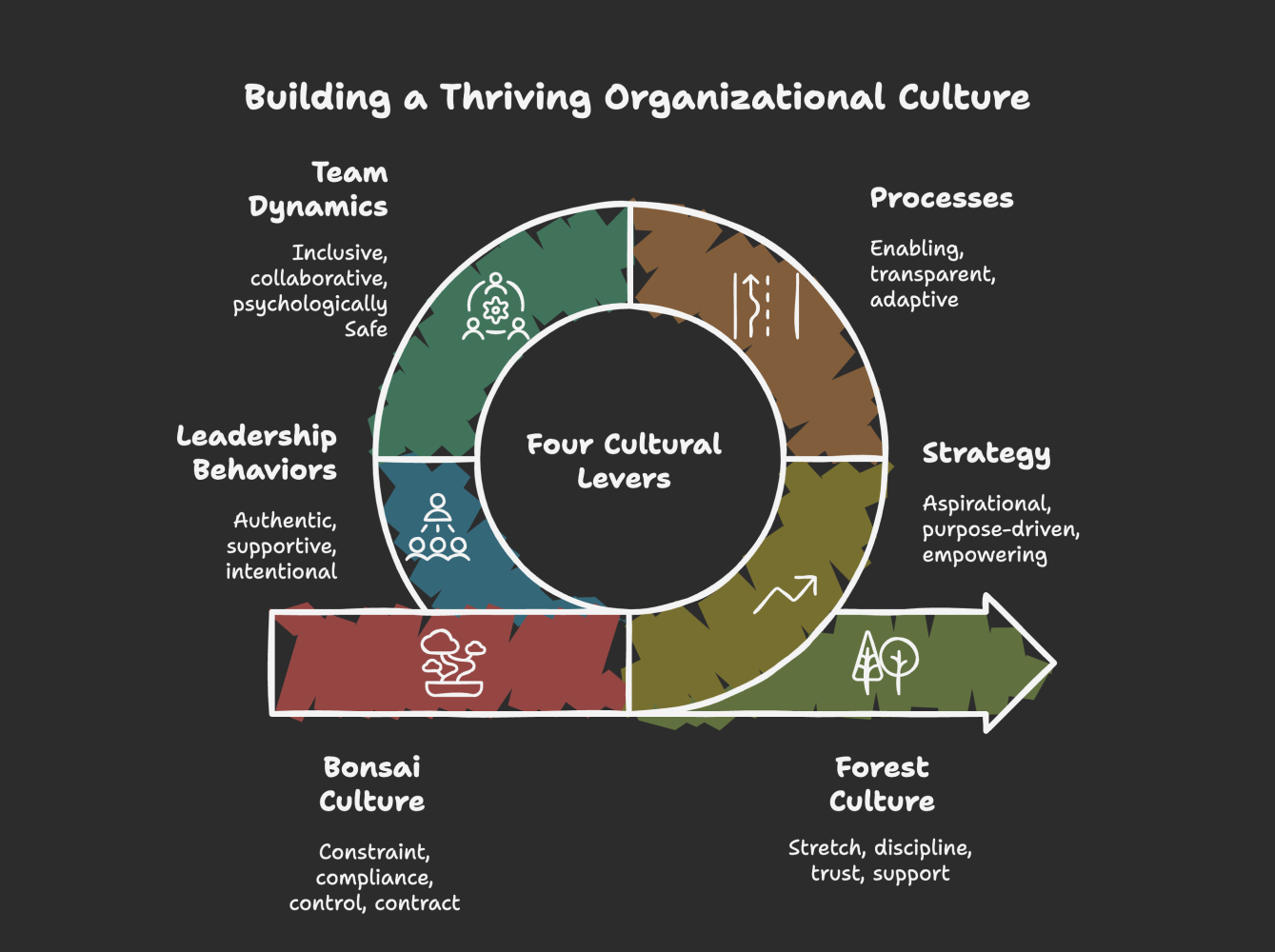The Bonsai and the Forest: Rethinking Culture Through the ‘Smell of the Place’
May 24, 2025

During my ongoing course at the Indian School of Business, I had the privilege of learning from Professor Nandu Nandkishore, who introduced us to a timeless idea from the late Professor Sumantra Ghoshal —
“The Smell of the Place.”
First delivered at the World Economic Forum in 1995, this idea is simple yet profoundly relevant today:
❝ You cannot engineer behavior. You can only evoke it — through context. ❞
Watch the original talk here: Prof. Ghoshal at WEF – “The Smell of the Place”
🌳 A Bonsai Tree vs. A Wild Forest
A bonsai is carefully pruned, shaped, and controlled. It’s beautiful — but it can’t grow beyond its pot.
A forest is messy, organic, unpredictable — and alive. It adapts, self-organizes, and thrives with resilience.
Most organizations say they want forests… but build bonsais.
They pursue performance through control — unintentionally limiting creativity, ownership, and initiative.
🧭 The Smell of the Place
Prof. Ghoshal used a vivid metaphor: Fontainebleau in spring vs. Kolkata in summer.
Not a lesson on climate — a reflection on organizational energy.
We scan for cues in every space we enter:
- Is it safe to speak up?
- Will failure be punished?
- Is effort seen, valued, amplified?
The smell of the place is invisible but emotionally potent — and it shapes behavior more than policies ever can.
🔧 The 4 Cultural Levers
Prof. Ghoshal outlined four levers leaders can shape:
- Strategy – Are we aiming high? Is there purpose behind our goals?
- Processes – Are we enabling autonomy, or enforcing obedience?
- Team Dynamics – Do people feel heard, valued, safe?
- Leadership Behaviors – What do we actually model, tolerate, and reward?
❌ The Bonsai Culture: When Levers Shrink Potential
- Constraint in Strategy
- Compliance in Processes
- Control in Team Dynamics
- Contract in Leadership
This breeds fear, formality, and passivity. People perform — but don’t grow. The culture is ornamental, not transformational.
✅ The Forest Culture: Stretch. Discipline. Trust. Support.
- Stretch → Purpose-driven ambition
- Discipline → Meaningful consistency
- Trust → Empowered autonomy
- Support → Coaching and care
This breeds energy, ownership, innovation. People rise — not because they’re pushed, but because they’re evoked.

🧠 As Leaders, We Must Ask:
- Does our strategy stretch or shrink ambition?
- Are our processes enabling or exhausting?
- Are our teams collaborative or cautious?
- Do we lead with support and intent — or supervision and silence?
Leadership isn’t about shaping people. It’s about shaping the environment — and letting people grow.
🌬️ What Does Your Culture Smell Like?
If you walked in today as a new joiner:
Would you feel possibility — or pressure?
Would you speak up — or play it safe?
Let’s stop pruning potential. Let’s grow forests.
Share your story. What have you done (or seen) to change the “smell of the place”?
P.S. Bonsai lovers, please don’t come after me! I promise I have nothing against bonsais. They’re beautiful, artistic, and full of Zen. But in the workplace, you don’t want your people trimmed, wired, and told how tall they’re allowed to grow. This metaphor is strictly for organizational use only — no bonsais were harmed in the making of this post!
#Leadership #OrganizationalCulture #WorkplacePsychology #GrowthMindset #SmellOfThePlace #ISBExperience #PsychologicalSafety #BusinessPhilosophy